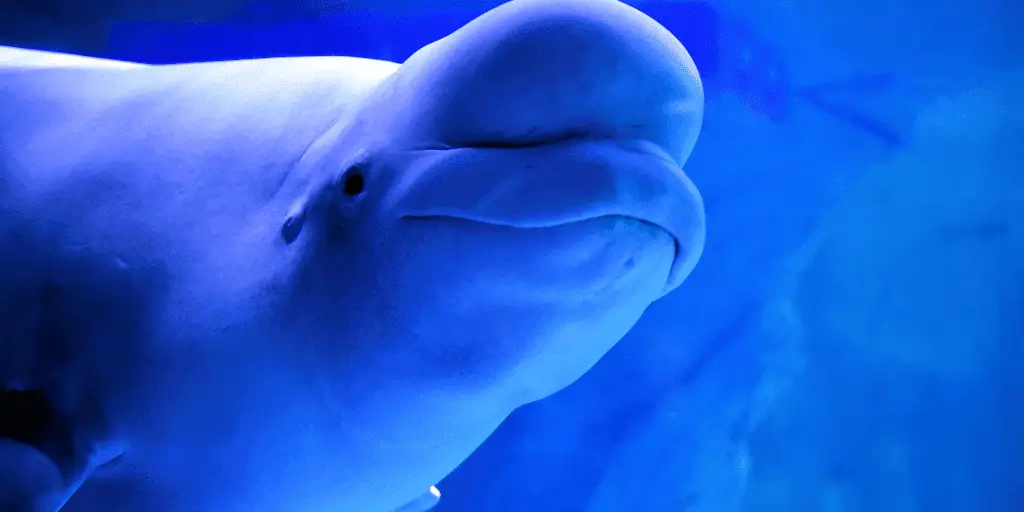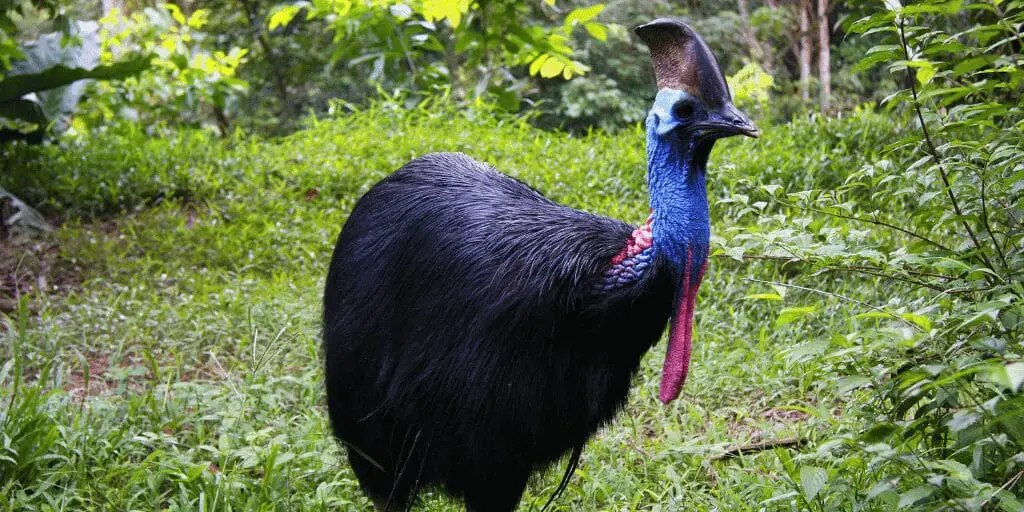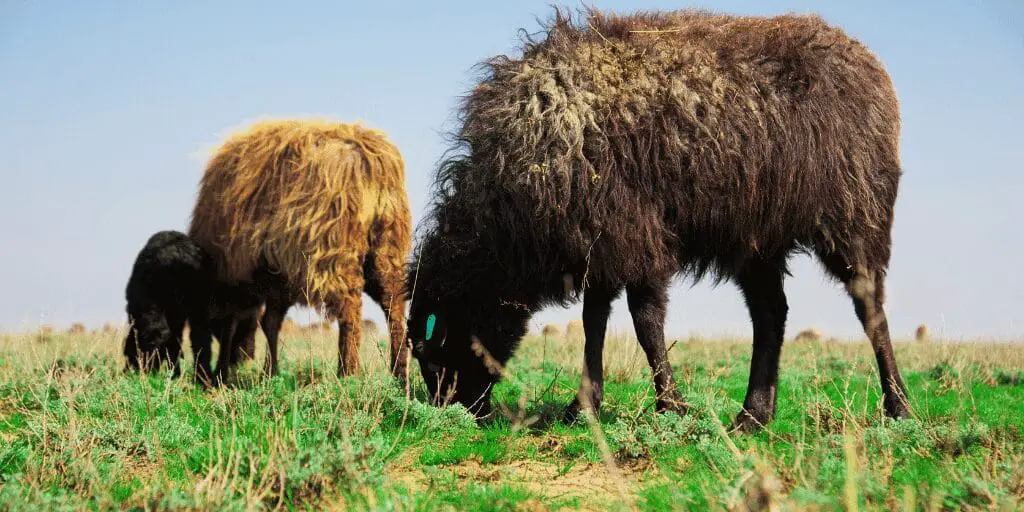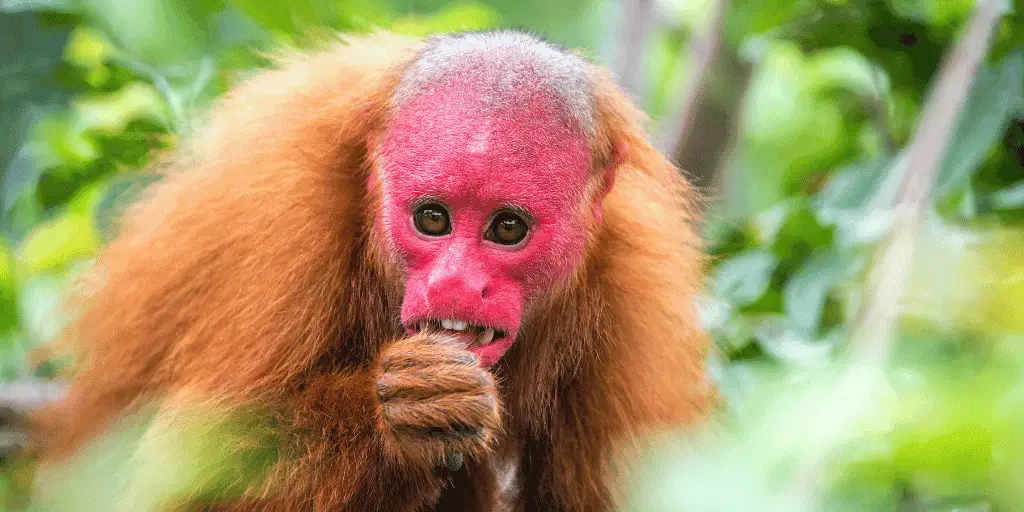Discover the fascinating world of big forehead animals, where evolution’s creativity is on full display. From the Arctic’s beluga whales to the African savannah’s elephants, these creatures’ prominent foreheads are not just distinctive features but vital survival tools.
Dive into the lives of these remarkable animals, understand the threats they face, and explore the conservation efforts that could mean the difference between their persistence and peril.
Key Takeaways:
- Beluga whales, known for their stark white coloration and bulbous foreheads, use these features for communication and navigation in arctic waters. Conservation efforts are vital to protect their habitats from climate change and industrial activities.
- Elephants, with their pronounced foreheads, have evolved robust skulls to support their tusks and trunk muscles, playing a crucial role in their ecosystems. They face severe threats from poaching and habitat loss, with conservation efforts focusing on sanctuaries and anti-poaching initiatives.
- Cassowaries, bearing a helmet-like casque on their heads, are vital for seed dispersal in their rainforest habitats. They face threats from habitat destruction and fragmentation, with conservation efforts aimed at protecting their natural habitat and reducing vehicle strikes.
- The Green Humphead Parrotfish, with its large forehead, is essential for the health of coral reefs, grazing on algae and dead coral. Overfishing has led to a decline in their populations, highlighting the need for marine protected areas and regulated fishing practices.
- Sperm whales, with their massive heads containing the spermaceti organ, are deep-sea divers with complex social structures. Conservation efforts have shifted from exploitation in the whaling industry to research focused on their communication methods and the health of deep-sea ecosystems.
List of Big Forehead Animals
Beluga whales, bottlenose dolphins, and bowhead whales have large foreheads for communication and navigation. Elephants, gorillas, and American bison use their prominent foreheads for social and survival functions.
| Animal Category | Species | Unique Traits and Functions | Conservation Efforts |
| Marine Animals | Beluga Whales, Bottlenose Dolphins, Bowhead Whales | Use large foreheads for echolocation, communication, and navigating arctic waters | Protecting habitats from climate change and industrial activities |
| Land Mammals | Elephants, Gorillas, American Bison | Robust skulls for supporting tusks and muscles; social and survival functions | Anti-poaching initiatives, habitat preservation, restoration projects |
| Birds | Cassowaries | Helmet-like casque for seed dispersal, communication in rainforest habitats | Protecting natural habitat, reducing vehicle strikes |
| Fish | Green Humphead Parrotfish | Large forehead for grazing on algae and dead coral, maintaining coral reef health | Establishing marine protected areas, regulated fishing practices |
| Whales | Sperm Whales | Massive heads with spermaceti organ for deep-sea diving and complex social structures | Research on communication methods, protection of deep-sea ecosystems |
1. Marine Marvels with Big Foreheads

Beluga Whales
Beluga Whales are easily recognizable by their stark white coloration and the bulbous structure at the front of their heads. This unique feature is not just for show; it’s an essential tool for communication and navigation. Known as the “canaries of the sea,” Belugas use their foreheads to produce a variety of sounds, which is crucial for social interactions within their pods.
They inhabit the chilly waters of the arctic and sub-arctic, feasting on fish, crustaceans, and worms. Recent conservation efforts have focused on protecting these areas from the threats of climate change and industrial activities. By understanding the importance of their distinct foreheads, we can better appreciate the need to preserve the Beluga’s natural habitat.
Bottlenose Dolphins
Bottlenose Dolphins are the geniuses of the sea, with their large foreheads playing a pivotal role in their echolocation abilities. This ‘melon’, as it’s called, allows them to navigate and hunt with precision in the murky waters of oceans and bays. Their social behavior is complex, and their big foreheads facilitate nuanced communication that strengthens the bonds within their pods.
Unfortunately, they face threats from pollution, fishing nets, and habitat loss. Dolphin conservation organizations work tirelessly to mitigate these threats, and support from the public is crucial for their efforts to succeed.
Bowhead Whale
The Bowhead Whale is a true Arctic specialist, with a massive skull that can break through thick sea ice to create breathing holes. Their diet consists mainly of tiny zooplankton, which they filter through their baleen plates. Bowheads undertake long migrations, and they hold a special place in the culture of indigenous peoples.
The changing climate poses a significant threat to their icy homes, making research and conservation efforts more important than ever. By studying these animals and their habitats, scientists can develop strategies to protect them, ensuring that the Bowhead Whale continues to thrive in the face of a warming world.
2. Land Giants with Prominent Foreheads
Elephants
When you gaze upon an elephant, the grandeur of its forehead is as striking as its massive size. African elephants, with their larger ears and more pronounced foreheads, differ from their Asian counterparts, who have a smoother, more rounded forehead.
These majestic creatures have evolved these robust skulls to support their heavy tusks and powerful trunk muscles. Known for their remarkable intelligence, elephants have complex social structures and play a pivotal role in their ecosystems by aiding in seed dispersal and creating water holes used by other wildlife.
Sadly, they face severe threats from poaching for ivory and loss of habitat. Conservation efforts are ongoing, with sanctuaries and anti-poaching initiatives at the forefront. Elephant lovers can contribute to these efforts by supporting organizations that focus on habitat preservation and anti-poaching measures.
Gorillas
Gorillas, with their thoughtful eyes set beneath a prominent brow ridge, are a testament to the beauty of evolution. Their large foreheads are not just for show; they house the muscles necessary for their strong jaw, essential for their predominantly herbivorous diet.
These gentle giants live in tight-knit family groups, showcasing remarkable intelligence and emotional depth. Their habitats, however, are under siege due to deforestation and illegal hunting. Organizations are tirelessly working to protect these magnificent primates, and by supporting gorilla conservation efforts, individuals can help ensure that gorillas continue to thrive in their natural environments.
American Bison
The American Bison, with its broad and muscular forehead, is a symbol of strength and resilience. Once roaming the plains in vast numbers, they were brought to the brink of extinction in the 19th century.
Thanks to concerted conservation efforts, their numbers have seen a remarkable recovery. The bison’s diet of grasses plays a crucial role in maintaining the prairie ecosystem, and their presence is culturally significant to many Native American tribes. Conservation programs not only focus on increasing bison populations but also on restoring the prairies that are vital to their survival.
By participating in or supporting these ecosystem management and restoration projects, people can contribute to the ongoing success story of the American Bison.
3. Unique Birds and Reptiles

Cassowary
When you first lay eyes on a cassowary, it’s hard not to be intrigued by its prominent casque—a helmet-like structure atop its head. This distinctive feature has puzzled scientists for years, but it’s believed to play a role in everything from mate attraction to thermoregulation.
Some theories suggest that the casque may amplify the bird’s deep, rumbling calls, which can resonate through dense rainforest underbrush, helping cassowaries communicate over long distances.
Native to the tropical forests of New Guinea and northeastern Australia, cassowaries are frugivores, primarily feasting on fruits, which makes them vital for seed dispersal.
Their role in the ecosystem is so significant that they are considered a keystone species; their absence would drastically alter the habitat. Cassowaries are also known for their solitary and sometimes aggressive behavior, especially when they feel threatened or are protecting their nests.
Unfortunately, these magnificent birds face threats from habitat destruction and fragmentation. As forests are cleared for agriculture or urban development, cassowaries lose the space they need to thrive. Conservation efforts are crucial to ensure their survival, and they include protecting their natural habitat and reducing vehicle strikes, a common cause of death for these birds.
Supporting cassowary conservation can be as simple as donating to wildlife organizations dedicated to preserving their habitats or even spreading awareness about the importance of these unique birds. By understanding the critical role cassowaries play in their ecosystems, we can better appreciate the need to protect them and the vast forests they call home.
4. Freshwater Friends
Flowerhorns
Flowerhorn fish are a sight to behold with their vivid colors and the striking, bulbous foreheads known as “nuchal humps.” These freshwater fish are actually a hybrid, born from the crossbreeding of different cichlid species.
Originating in Malaysia, Thailand, and Taiwan in the late 1990s, Flowerhorns have since become a staple in the aquarium trade, prized for their unique appearance and believed by some to bring good luck.
The large forehead of a Flowerhorn isn’t just for show; it’s a symbol of vitality and a key feature for mate selection. However, the care for these magnificent creatures is complex. They require spacious tanks with plenty of room to accommodate their size and territorial nature.
The water quality needs to be meticulously maintained to prevent health issues, particularly those related to their prominent foreheads, which can be prone to infections if not cared for properly.
Breeding Flowerhorns for exaggerated physical traits raises ethical questions. The pursuit of the perfect nuchal hump can sometimes lead to health problems for the fish. Enthusiasts should prioritize the well-being of Flowerhorns by advocating for responsible breeding practices and providing them with the care they need to thrive.
Green Humphead Parrotfish
The Green Humphead Parrotfish is an architect of the ocean, playing a pivotal role in the health of coral reefs. With their large, protruding foreheads and powerful beaks, they graze on algae and dead coral, facilitating new coral growth and maintaining the delicate balance of the reef ecosystem.
These foreheads aren’t just for feeding; they also serve as a protective feature during head-to-head collisions that occur during competitive displays.
Understanding the lifecycle and habitat of the Green Humphead Parrotfish is essential for their conservation. They are typically found in the Indo-Pacific region, where they navigate the complex structures of the coral reefs. Unfortunately, overfishing has led to a decline in their populations, which in turn affects the health of the reefs.
Conservation efforts are crucial in protecting these vibrant ecosystems and the species that inhabit them. By establishing marine protected areas and regulating fishing practices, we can ensure that the Green Humphead Parrotfish continues to thrive, maintaining the biodiversity and resilience of coral reefs for future generations.
5. Mammals of Distinction

Wild Yak
In the biting cold of the Himalayas, Wild Yaks are a majestic sight, with their thick fur and prominent foreheads. These foreheads aren’t just for show; they play a crucial role in their social behavior, acting as a thermal regulator and a protective shield during head-to-head combat among males.
The forehead also helps them plow through snow to find vegetation. Wild Yaks are integral to local communities, providing resources such as milk and wool. However, they face threats from climate change, which disrupts their delicate high-altitude ecosystem, and overhunting.
Conservation measures, including protected areas and regulated hunting, aim to ensure that Wild Yaks continue to roam the mountainous landscapes.
Orangutans
Orangutans, with their wise gaze and large, expressive foreheads, are the gardeners of the forest, playing a pivotal role in seed dispersal. Their distinctive forehead and cheek pads are not just a sign of maturity but also a display of health and vigor, important for attracting mates.
Sadly, these intelligent beings are under siege from deforestation and the palm oil industry, which decimate their habitats. Rehabilitation and conservation programs are fighting back, providing safe havens and working towards sustainable palm oil production. By choosing products with the right certifications and supporting these programs, readers can help secure a future for orangutans.
Koala
Koalas are synonymous with the Australian bush, their large heads and distinctive noses making them one of the most recognizable marsupials. These features are essential for communication and recognition among koalas. Their diet consists almost exclusively of eucalyptus leaves, which are both their food and water source.
However, habitat destruction and climate change pose significant threats, leading to a loss of their food trees and homes. Conservation efforts, such as planting eucalyptus corridors and protecting habitats, are vital. Individuals can aid these efforts by supporting wildlife organizations and being mindful of the products they use that may impact koalas’ habitats.
6. Underwater Mysteries
Sperm Whales
Sperm Whales are the titans of the deep with their massive heads housing the mysterious spermaceti organ. This large, oil-filled cavity is thought to aid in echolocation and buoyancy control, allowing these giants to dive to depths of over 2,000 meters in search of their preferred diet—squid.
Their complex social structure is fascinating, with pods exhibiting tight-knit family bonds. Historically, the spermaceti was a highly sought-after substance, leading to the whale’s exploitation in the whaling industry.
Thankfully, conservation efforts have turned the tide, and current research is now focused on their sophisticated communication methods, known as codas, which may be key to understanding not only the species but also the health of deep-sea ecosystems.
Squid
Squid are the enigmatic cephalopods of the sea, with their large heads playing a pivotal role in their survival. Their massive eyes are evolutionary marvels, perfectly adapted to detect the faintest glimmers of light in the dark ocean depths.
These agile hunters utilize a combination of stealth and speed, with their head size contributing to their ability to ambush prey and evade predators. Squid species are incredibly diverse, ranging from the tiny bobtail squid to the colossal squid, each with unique behaviors that captivate scientists.
The impact of climate change and human activities on squid populations is a growing concern, prompting research into their biology and the development of strategies to ensure their protection. As indicators of ocean health, understanding and safeguarding squid is essential for the future of our seas.
Oranda Goldfish
The Oranda is a captivating breed of goldfish, easily recognized by its distinctive “wen”—a fleshy, cap-like growth on the top of its head that resembles a large forehead. This wen can develop as the fish matures and is a hallmark of the breed, often sought after by enthusiasts for its unique appearance.
Caring for Orandas requires a keen understanding of their needs, as the wen is not just for show—it can affect the fish’s swimming and even its feeding habits. Aquarists must ensure their tank is well-maintained, with pristine water conditions to prevent infections that can target the sensitive wen tissue.
Breeding Orandas is a delicate art, with breeders aiming to enhance the wen’s size and symmetry through selective mating, while also considering the overall health and vitality of the fish.
The popularity of Orandas in aquaculture is undeniable, but it comes with genetic considerations. Breeding for specific traits, such as an exaggerated wen, raises ethical questions about the welfare of the fish. Potential owners must research and understand these aspects before diving into Oranda’s ownership.
7. Primates with Presence

Bald Uakari
The Bald Uakari is a standout among primates, with its distinctive bald head and bright red face, which is actually a health indicator; a paler face can signal illness to others in the group. Found in the lush Amazon rainforest, these primates have adapted to a life in the trees, swinging from branch to branch in search of food. Their diet mainly consists of fruits, but they also eat leaves, insects, and small animals.
Socially, Bald Uakaris are quite gregarious, forming large groups that can number in the hundreds. This social structure is essential for their survival, offering protection from predators and helping them locate food more efficiently. However, their existence is under threat due to deforestation and climate change, which are destroying their natural habitat.
Conservation efforts for the Bald Uakari include protecting large areas of the Amazon rainforest and conducting research to better understand their needs and behaviors. These projects are crucial for ensuring that future generations can continue to witness the unique beauty and social complexity of this extraordinary primate.
8. Icons of the Ice
Musk Ox
Imagine a creature that looks like it stepped right out of the Ice Age, with a massive forehead shielded by thick, curved horns. This is the Musk Ox, a hardy survivor of the Arctic tundra. These animals have adapted to some of the harshest conditions on Earth, with social structures that are as complex as their environment is challenging.
Musk Oxen form tight-knit groups, and when danger approaches, they use their large foreheads and horns in a defensive formation that has been likened to a fortress.
Their diet consists mainly of Arctic willows, grasses, and other vegetation that can be scraped from beneath the snow. This foraging technique is facilitated by their robust skulls, which support the powerful muscles needed to sweep snow aside. But it’s not just about finding food; their foreheads also play a pivotal role in social interactions, with head-butting displays being a common sight during mating season or when asserting dominance.
The changing climate, however, poses a significant threat to these ancient animals. As the Arctic warms, their habitat shrinks, and human activities encroach further into their territories. Conservation initiatives are crucial in ensuring the Musk Ox’s survival, with efforts focusing on habitat protection and sustainable practices that minimize human impact.
By supporting these initiatives, we can help preserve the legacy of the Musk Ox, ensuring that these icons of the ice continue to thrive in their frozen world.
- What Should I Do If A Koala Bites Me? Safety Guide - 2024-05-30
- Are Kangaroos Born Without Hind Legs? A Fascinating Journey - 2024-05-30
- Animals That Look Like Squirrels - 2024-05-30









